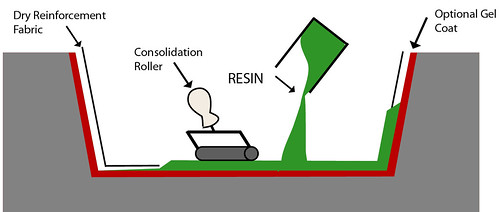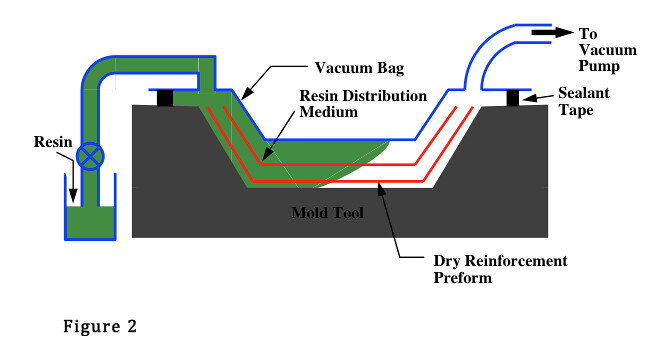


|
|
|
 |
| 09-16-2010, 05:09 PM | #1 |
|
Major
 84
Rep 1,256
Posts |
Carbon Fiber 101 (Learn about CF, differences in CF)
As with our other articles, the purpose of this article is to help enthusiasts who are looking to learn more about things related to the motorsport industry.
Our last article spoke about the different manufacturing methods of wheels. In this article we are going to have a quick look at Carbon Fiber. Carbon Fiber is probably the most sought after composite material in the high performance motorsport world. From Formula 1 teams looking to make their cars lighter and stronger, to everyday enthusiasts who admire the way its unique finish sets a motorsport feel to their vehicles. But not all carbon fiber products are created equal. In fact, although some carbon fiber products may APPEAR to look the same, they are indeed, worlds apart in structural, geometrical, durability, and finish. OPEN MOLDING METHOD The most commonly used manufacturing method The Open Molding method of forming carbon fiber parts has been used since the beginning of composite materials to create various molded shapes and is virtually the same as the methods used for molding fiberglass. For now, we are concerned with the Open Molding using the most common “Hand or Manual Lay Up” method. This technique involves laying carbon fibers by hand into a mold of the desired part and then pouring a resin over the fibers, using rollers and/or brushes to make sure the mixture is spread evenly. This mixture is done manually, therefore it is generally more difficult to get an even distribution of carbon fiber and the correct fiber to resin ratio. The carbon fiber-resin mixture is then allowed to dry, usually at room temperature. A simple mock up of this method is shown in figure 1.  ADVANTAGES: The main advantage of using the hand lay up method is low start-up and material investment costs. For this reason, it has become the manufacturing method of choice for most aftermarket companies. DISADVANTAGES: The main disadvantage to using this method is that the mixture is loaded with resin, this occurs because of the manual impregnation of the resin. Because of this uncontrolled impregnation it is easy to have excess amounts of resin, making the finished part heavier, weaker, and stiffer. Another drawback to the hand lay up method is due to the manual resin mixture in combination with drying at room temperature, this creates voids and “bubbles” that reduce the parts mechanical properties. And because the process is entirely manual, geometry of the parts varies from part to part which can lead to fitment issues. In conclusion. You will get the carbon fiber look but not any of its advantages. Your part will share more properties with fiberglass than actual carbon fiber. Buying products that are made using this method isn't a bad thing if you're on a budget. Just make sure that the company you buy it from isn't overcharging for the part because they are passing it off as professional grade quality carbon fiber. RESIN TRANSFER METHOD The RTM technique for forming carbon fiber components uses the same materials (ie resin and carbon fibers inside of a mold), however it differs in the method in which the resin is injected into the mold. In Open Molding, resin is simply poured in the mold manually. Using the RTM technique, the closed mold is turned into a vacuum by venting out one end, then the resin is sucked into the mold using a low pressurized system. With Closed Molding, the composite is molded using a rigid mold coupled with a laminate which pressure is applied to. This compresses the fiber tight against the rigid mold surface. This process is shown in Figure 2.  ADVANTAGES: The main advantages to using closed molding techniques, more specifically RTM, over open molding is having a mixture that is nearly perfect and almost consistent. This brings bubbles and voids to a bar minimum, yielding a finished product with excellent overall structural strength. The compression of the molds gives the carbon fiber strands a far superior looking finish when compared with Open Molding. The finalized part outperforms “hand” lay up carbon fiber a thousand fold. The result is carbon fiber of a very high grade. DISADVANTAGES: RTM usually employs higher manufacturing start up and unit costs. Because of this reason, most aftermarket companies avoid producing parts with RTM. And because it is higher, the retail often is as well. This is the quality you would expect from carbon fiber made by BMW, Porsche, Audi, and other OEM AUTO companies. CONCLUSION It's all in what you're looking for. Money is almost always a deciding factor. The important thing is for you to always know what you're getting yourself into. This way, you know if a company is overcharging for their open mold carbon fiber parts. If you do go for open mold because you just don't have the cash, make sure the company absolutely guarantees fitment as this is the No.1 issue. So always ask before you buy them, sometimes companies will tweak names so as to avoid being associated with Open Molding. But now that you know the method, it won't matter what they call it! Cheers,  DTMrack.com Sales Team Last edited by DTMrack.com; 09-28-2010 at 11:18 AM.. |
| 09-16-2010, 10:47 PM | #2 |
|
Major General
  159
Rep 5,689
Posts |
And guess what icarbon uses

__________________
 Legal Disclaimer: Anything I or anyone else says about my vehicle on this website(1addicts.com or any affiliated or nonaffiliated sites), pertaining to modifications, is only to gain acceptance from my/our peers, and does not actually represent anything actually existing on my car, and thus, cannot be held against me in any issues, i.e. warranty claims, that may arise. Legal Disclaimer: Anything I or anyone else says about my vehicle on this website(1addicts.com or any affiliated or nonaffiliated sites), pertaining to modifications, is only to gain acceptance from my/our peers, and does not actually represent anything actually existing on my car, and thus, cannot be held against me in any issues, i.e. warranty claims, that may arise. |
|
Appreciate
0
|
| 09-18-2010, 07:54 PM | #4 |
|
:)

0
Rep 49
Posts
Drives: '10 BSM 135i
Join Date: Aug 2010
Location: Vancouver, B.C.
|
|
|
Appreciate
0
|
Post Reply |
| Bookmarks |
|
|